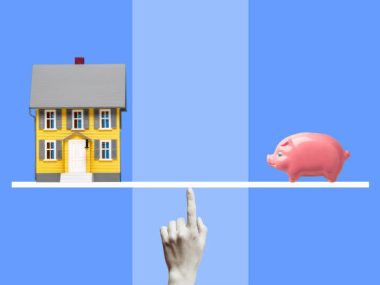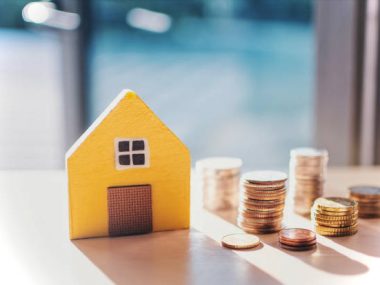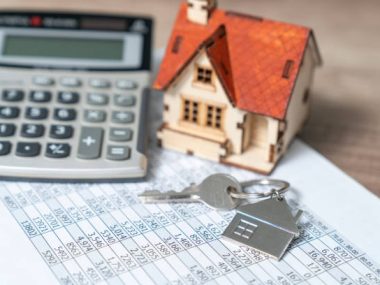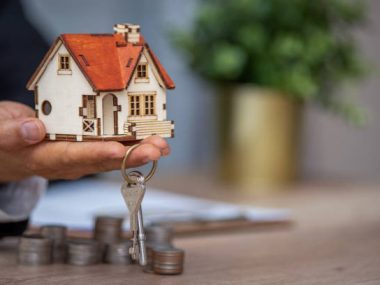How long after bankruptcy can you get a mortgage? Bankruptcy, though often viewed as a financial setback, doesn’t necessarily spell the end of homeownership dreams.
In fact, for many individuals who have faced bankruptcy, the possibility of obtaining a mortgage and purchasing a home remains within reach.
The journey, however, involves understanding the nuances of waiting periods, credit rehabilitation, and lender expectations.
If you’ve been through bankruptcy and are wondering about the timeline for securing a mortgage, this guide will shed light on the various factors influencing the waiting period after bankruptcy.
From the types of bankruptcy to credit score rehabilitation, we’ll explore the essential components that determine how long it takes to become eligible for a mortgage post-bankruptcy.
So, if you’re ready to take steps towards owning a home once more, let’s delve into the details of this crucial post-bankruptcy endeavor.
Also Read:
How Long Does a Cosigner Stay on a Mortgage?
When Do You Stop Paying Mortgage When Selling House?
How Long After Bankruptcy Can You Get a Mortgage?
After experiencing bankruptcy, the prospect of obtaining a mortgage might seem distant, yet it’s not an unattainable goal.
The time frame for securing a mortgage after bankruptcy hinges on several key factors.
Firstly, the type of bankruptcy – Chapter 7 or Chapter 13 – plays a pivotal role.
For Chapter 7 bankruptcy, which involves liquidating assets to clear debts, the waiting period before mortgage eligibility generally ranges from 2 to 4 years.
Chapter 13 bankruptcy, involving a repayment plan, often necessitates waiting for 1 to 2 years after completion of the plan.
Another determining aspect is credit score rehabilitation. Rebuilding credit is essential to prove financial stability to lenders.
While bankruptcy significantly impacts credit scores, diligent efforts to rebuild credit through responsible financial behavior can expedite the mortgage eligibility process.
Lenders also consider the applicant’s financial standing post-bankruptcy, focusing on stable employment, income, and debt-to-income ratio.
Lender policies differ, and some may impose longer waiting periods than others.
Moreover, seeking advice from financial professionals can provide tailored guidance based on individual circumstances.
Overall, the waiting period after bankruptcy to secure a mortgage is influenced by bankruptcy type, credit recovery, financial stability, and lender criteria.
Patience, prudent financial habits, and informed decision-making can pave the way for homeownership aspirations to be realized once again.
Factors Influencing the Waiting Period After Bankruptcy
The waiting period after bankruptcy before becoming eligible for a mortgage is shaped by several influential factors.
One primary consideration is the type of bankruptcy filed – Chapter 7 or Chapter 13. For Chapter 7 bankruptcy, where assets are liquidated to settle debts, the waiting period often ranges from 2 to 4 years.
In Chapter 13 bankruptcy, involving a debt repayment plan, the wait is usually around 1 to 2 years after successfully completing the plan.
Credit score recovery is crucial.
Bankruptcy significantly impacts credit scores, but proactive efforts to rebuild credit demonstrate improved financial responsibility.
Lenders often require a minimum credit score before approving a mortgage application post-bankruptcy.
Financial stability post-bankruptcy is also weighed.
Lenders assess factors like consistent employment, reliable income, and a reasonable debt-to-income ratio.
Demonstrating responsible financial behavior during the waiting period can enhance eligibility.
Lender policies further shape the waiting period. Some lenders impose longer waiting periods than others based on risk tolerance.
Seeking guidance from financial advisors and mortgage professionals helps navigate this complex landscape.
Overall, the waiting period after bankruptcy for mortgage eligibility is influenced by bankruptcy type, credit score revival, financial stability, and lender discretion.
A strategic approach to rebuilding credit and maintaining financial health can expedite the journey toward homeownership once again.
Tips for Expediting Mortgage Eligibility After Bankruptcy
Securing a mortgage after bankruptcy may appear challenging, but proactive measures can expedite the process.
Firstly, focus on credit score repair. Obtain and review credit reports for accuracy, and initiate steps to rebuild credit.
Timely bill payments, responsible credit utilization, and avoiding new debts aid in raising credit scores.
Creating a stable financial foundation is crucial. Maintaining steady employment and a reliable income showcases financial stability to lenders.
Moreover, managing existing debts and avoiding new ones improves debt-to-income ratios, a pivotal factor in mortgage approval.
Exploring diverse loan options is advisable. Some lenders specialize in post-bankruptcy mortgages with shorter waiting periods.
Federal programs like FHA loans often offer more lenient requirements.
However, be cautious about high-interest loans, ensuring they align with long-term financial goals.
Saving for a substantial down payment is advantageous.
A larger down payment reduces the loan amount and risk for lenders, potentially offsetting the impact of bankruptcy.
Seeking pre-approval from multiple lenders can offer insights into eligibility and terms.
Mortgage professionals can provide tailored guidance, considering individual circumstances and providing valuable advice.
Overall, expediting mortgage eligibility after bankruptcy involves proactive credit repair, financial stability, exploring diverse loan options, saving for a sizable down payment, and seeking professional advice.
While patience is essential, strategic actions can pave the way for homeownership sooner than expected.
Also Read:
What Happens to Your Mortgage During a Recession?
What Is an Open-End Mortgage? (All You Should Know)
Conclusion
The timeline for obtaining a mortgage after bankruptcy varies depending on factors such as the type of bankruptcy filed, credit score recovery, financial stability, and lender policies.
While Chapter 7 and Chapter 13 bankruptcies entail different waiting periods, rebuilding credit through responsible financial practices is key.
Demonstrating consistent income, managing debts, and exploring lender options can accelerate eligibility.
Despite the challenges, the dream of homeownership remains attainable.
By navigating the waiting period thoughtfully and seeking professional advice, individuals can position themselves for a successful mortgage application and embark on a new chapter of homeownership.






